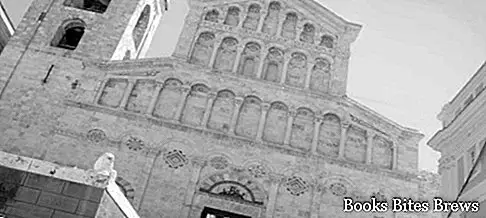What to see in Cagliari, one-day itinerary including the main monuments and places of interest, including Bastione di Saint Remy, Cathedral of Santa Maria and Archaeological Museum.
Tourist information
Overlooking the homonymous large gulf, Cagliari is a port city, as well as the regional capital, located along the southern coast of Sardinia.
The first human settlements in the area date back to the fifth millennium BC, also in that territory the first Phoenician colonies settled, between 1200 and 800 BC, replaced by the Carthaginians starting from the sixth century BC.
In 238 BC Roman domination began, which lasted about seven hundred years.
In 455 AD it was conquered by the Vandals, which were followed by the Byzantines in 553, later, after a period of Saracen raids, in the first years after the year 1000 an autonomous government took office which divided the island into four giudicati, one of which was Cagliari .
The colonization of the city by the Pisans dates back to the two hundred, who in 1326 were replaced first by the Aragonese and then by the Spanish domination, which lasted for further 240 years.
After being conquered by the British in 1708, the city passed to Charles VI of Austria in 1713 and to the Savoy in 1720.
To visit Cagliari you can follow two itineraries.
The first itinerary starts from the Bastione di San Remy, built by Costa on a project by Cima, between 1899 and 1901, which can be accessed from the panoramic terrace Umberto I.
From the terrace you can walk a part of the Spanish ramparts, where the thirteenth-century door of the Two Lions opens and from which you reach the University Palace, located in the street of the same name, home to the print cabinet, including engravings and drawings by Sardinian artists.
Continuing on, you will come across the imposing Elephant Tower, a fortification of the castle built by the Pisans in 1307.
Recommended readings- Castelsardo (Sardinia): what to see in the medieval village
- Sardinia: Sunday day trips
- Muravera (Sardinia): what to see
- Gulf of Marinella (Sardinia): what to see
- Cala Gonone (Sardinia): what to see
Passing through Via Stretta and Piazza Carlo Alberto you arrive at the Cathedral of Santa Maria, located in Piazza Palazzo, dating back to the thirteenth century but renovated in 1664.
The three-nave interior has two pulpits on the counter-façade, obtained from a single Romanesque ambo, the work of the master William.
Noteworthy are a wooden Madonna of the fourteenth century and the balustrade of the presbytery area, decorated with lions that finish the ambo.
What see
Continuing along via Lamarmora you come across the Purissima, a suggestive church of 1554 with a single nave in Gothic style, then there is the Torre San Pancrazio, in Piazza Indipendenza, another fortification built by the Pisans in 1305 and having three stone sides and the open quarter, made up of stairs and balconies.
In the same square there is the National Archaeological Museum, whose finds have been transferred to the Citadel of the museums in Piazza Arsenale.
The visit of this museum is particularly interesting for the abundance of prehistoric and protohistoric material, from the pre-nuragic and nuragic period, with Phoenician, Punic, Roman and Byzantine finds.
Beyond the Porta Cristina you can reach the Municipal Art Gallery, along Viale Regina Elena and Viale San Vincenzo, whose paintings have also been transferred to the Citadel of the museums in Piazza Arsenale.
Not far away, heading south and past Viale Buon Cammino, there is the Roman amphitheater, of which it is still possible to admire the steps, corridors, underground areas and fences reserved for wild beasts.
Continuing we arrive at the entrance to the botanical garden and the Villa di Tegellio, consisting of the remains of three houses from the Roman era.
Descending towards the port in viale Trieste, we finally reach Piazza Matteotti where the 1901 Town Hall overlooks.
As for the second itinerary, we start from the Church of San Domenico, dating back to the seventeenth century but reworked in the fifteenth and sixteenth centuries, then damaged by the bombings of the Second World War and restored in 1953.
To admire the beautiful late Gothic cloister with Renaissance inserts.
In Piazza San Cosimo there is the church of San Saturnino, also known as the Church of Saints Sosma and Damiano, dating back to the fifth century and interesting testimony relating to the early Christian period.
Continuing along Via del Cimitero you reach the Sanctuary of Bonaria, located in the homonymous avenue, where the image of the patron saint of sailors is venerated, the Gothic portal of the facade is very beautiful.




